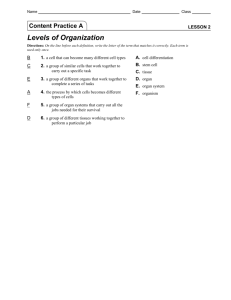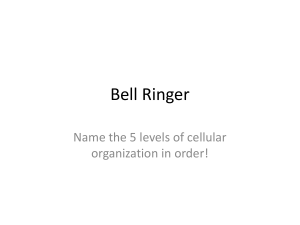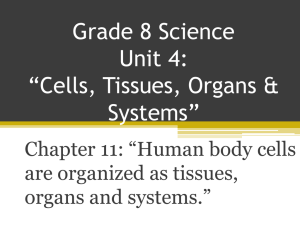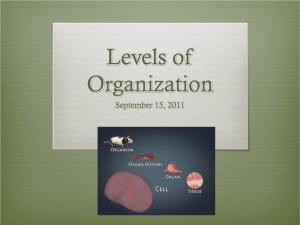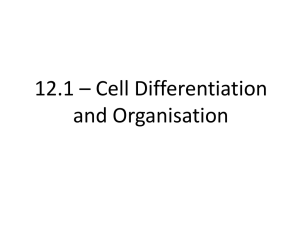Multicellular Organisms
advertisement
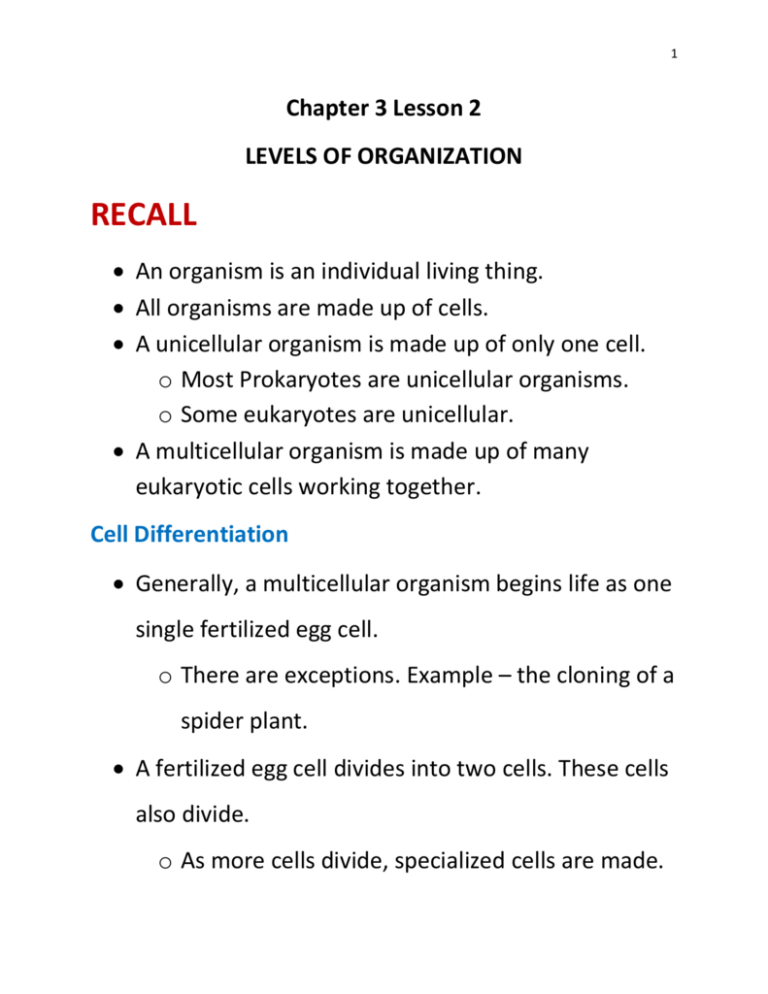
1 Chapter 3 Lesson 2 LEVELS OF ORGANIZATION RECALL An organism is an individual living thing. All organisms are made up of cells. A unicellular organism is made up of only one cell. o Most Prokaryotes are unicellular organisms. o Some eukaryotes are unicellular. A multicellular organism is made up of many eukaryotic cells working together. Cell Differentiation Generally, a multicellular organism begins life as one single fertilized egg cell. o There are exceptions. Example – the cloning of a spider plant. A fertilized egg cell divides into two cells. These cells also divide. o As more cells divide, specialized cells are made. 2 Cell differentiation is the process by which cells become different, specialized types. Animal Stem Cells Stem cells are unspecialized cells that are able to develop into many different specialized cells. There are 2 types of stem cells – embryonic stem cell and adult stem cells. o An embryo is an organism (plant or animal) in its earliest stage of life. o Embryos have many stem cells. o Adults also have stem cells. Adult stem cells are important for repair of tissues and replacement of cells. o Bone marrow contains stem cells that develop into many types of blood cells (red cells, white cells, platelets). o Stem cells can also be found in muscle and fat. 3 Plant Cells Plants also have unspecialized cells in their meristems. o Meristems are groups of plant cells capable of division and growth. There are stem meristems in the tips of plants, and root meristems in the tips of roots. Cell division in meristems leads to plant cells with specialized structures and functions such as flowers, leaves, and roots. Tissues Multicellular organisms have tissues. Tissues are groups of similar types of cells that work together to carry out a specific task. 4 Most animals have 4 main types of tissues: 1. Epithelial tissues form skin and the lining of major organs and body cavities 2. Muscle tissues are used for movement 3. Connective tissues provide structure & support, and can connect some other tissues 4. Nervous tissues carry messages to and from the brain Plants have three main types of tissues (see p. 102). 1. Dermal tissues make up the outside layer of plants. They reduce water loss. 2. Vascular tissues transport water and nutrients between different parts of the plant. 3. Ground tissue provides storage and support. This is where photosynthesis takes place. 5 Organs Organs are groups of different tissues working together to perform a particular job. o Example – The stomach has the 4 types of animal tissues. Plants have organs. o Example – A leaf is an organ for photosynthesis. Leaves have the three types of plant tissues. Organ Systems An organ system is a group of organs working together to complete a series of tasks. Humans have many organ systems. o Example: The digestive system includes the stomach, small intestine, liver, and large intestine. 6 Plants have two major organ systems – the shoot system and the root system. o The shoot system includes leaves, stems, and flowers. o The root system anchors the plant plus takes in water and nutrients. Multicellular Organisms A multicellular organism may contain many organ systems working together to maintain life. Summary Cells make up tissues in organisms, and tissues are organized into organs and organ systems. Cells are differentiated, which means they have different structures and carry out specific functions.



